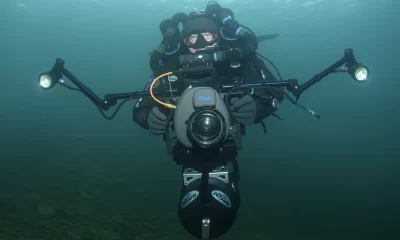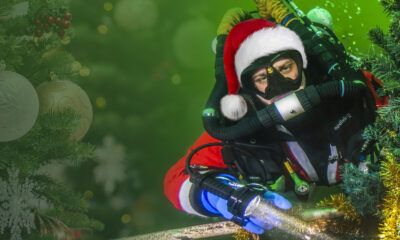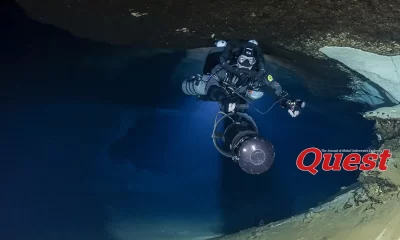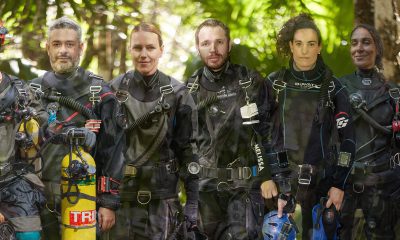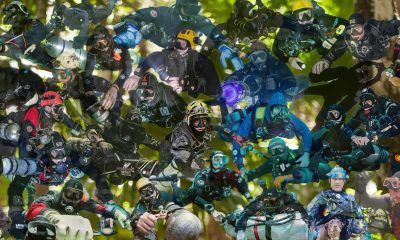Community
The Who’s Who of Sidemount

Robin Cuesta
Born in Paris, France Robin Cuesta is an avid cave explorer, cave, sidemount and rebreather instructor living in the town of Baubau, South-East Sulawesi, Indonesia. In 2019, he founded and owns Sulawesi Dive Trek, the first Indonesia-based dive center providing cave diving education. He is the first active technical cave diving instructor operating in Indonesia and has shaped many of the first Indonesian cave divers. When he is not teaching, he spends most of his free time exploring underwater caves beginning with Sulawesi and extending across the Indonesian archipelago. In addition, he is αn active advocate for Indonesian cave preservation and conservation and helps educate new divers to protect them. Robin will be part of the organization team for the upcoming Nixie Expeditions’ Buteng exploration campaign in what may be the longest underwater cave in south-east Asia.
What is sidemount to you?
What is sidemount to me? The answer is simple. Sidemount is the best tool for my job considering my location and the diving I do. I spend most of my time underwater exploring caves and teaching cave diving in a remote island in Indonesia. On land, I need to be able to carry the tanks in remote places, sometimes for quite a long distance. Using doubles would be a nightmare. Underwater, the versatility and streamlining of a properly configured sidemount rig is ideal for cave exploration. It allows me to penetrate tight tunnels while still offering the peace of mind of redundancy. Sidemount is the most versatile configuration for me and will work for almost all of the dives I do. But don’t get me wrong. Although it is ideal for me, it is a tool and may not be for everyone.
How can sidemount improve?
Thanks to numerous pioneers and explorers, sidemount is now a mature configuration. Things have been tried, rigs have evolved, sometimes for the best, sometimes for the worst. The setup most people use nowadays is very good and I can’t think of any major points to improve on the rig itself. The small adjustments and tuning every experienced sidemount diver does are a matter of personal preference.
The main improvement that needs to happen when I think about sidemount is training. Nowadays, any instructor can call themselves a “sidemount instructor.” They would teach this course like they would teach any specialty over two days or so, without understanding the “how” or the “why” of the configuration. Sidemount relies a lot on equipment setup and customization. As an instructor, not being able to explain how it actually works or why we set things up the way we do can only produce one thing: poor sidemount divers. In my opinion, training and instructor evaluation should be reevaluated by agencies. Learning sidemount is a major milestone in a diver’s career. It has to be treated that way.

What’s your fondest memory of sidemount?
Exactly the first minute of the first dive I did with a sidemount configuration back in the days in Thailand. I learned sidemount not so long after completing my first technical course in a twinset. I loved every moment of the course, but carrying this heavy thing on my back that was more than half my weight was just a pain! Being able to don my tanks in the water was such a blessing and the sensation of flying with nothing on your back while swimming underwater hooked me up instantly.
What is the future of sidemount?
Compared to the early days of Sidemount, I think we’re already in the future. As I said earlier, the rigs are mature and do the job properly. The future of sidemount lies in divers and explorers. We always find ways to improve our exploration tools and I am sure that someone, somewhere, someday will come up with a revolutionary idea. In the meantime, let’s build a better future for sidemount by raising the quality of training and the safety awareness amongst divers.
What are the pros and cons of sidemount for the traveling diver?
I travel A LOT, always for the sake of diving and cave exploration. I’ve traveled with basically every single configuration you can think of when it comes to technical diving, and sidemount in my opinion is by far the best option. Sidemount does not require any special equipment from the dive center. As long as you bring your Sidemount buoyancy compensating device with you, a pair of regs (maybe with a couple of DIN/yoke adapters) and your tank rigging, you’re good to go in every single dive center, even in the most remote parts of the world.
Sidemount gear can be adapted to any tank configuration with the correct knowledge and equipment. Twinset diving will require that the dive center actually has twinsets on hand, which can be mission impossible in some parts of the world. If weight is an issue, you could even make yourself a very lightweight sidemount rig with a few meters of webbing and some bits and pieces easily available online. I do not see any cons when it comes to traveling as a sidemount dive.
Return to: The Who’s Who of Sidemount
DIVE DEEPER
Speaking Sidemount: E071 – Robin Cuesta – The Caves of Sulawesi
Instagram: Robin Cuesta
YouTube: Robin Cuesta

















